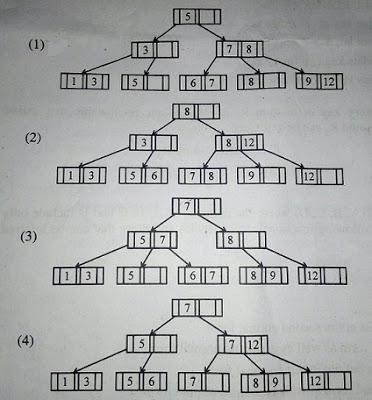Welcome to the Data Structures and Algorithms MCQs Page
Dive deep into the fascinating world of Data Structures and Algorithms with our comprehensive set of Multiple-Choice Questions (MCQs). This page is dedicated to exploring the fundamental concepts and intricacies of Data Structures and Algorithms, a crucial aspect of UGC CBSE NET Exam. In this section, you will encounter a diverse range of MCQs that cover various aspects of Data Structures and Algorithms, from the basic principles to advanced topics. Each question is thoughtfully crafted to challenge your knowledge and deepen your understanding of this critical subcategory within UGC CBSE NET Exam.
Check out the MCQs below to embark on an enriching journey through Data Structures and Algorithms. Test your knowledge, expand your horizons, and solidify your grasp on this vital area of UGC CBSE NET Exam.
Note: Each MCQ comes with multiple answer choices. Select the most appropriate option and test your understanding of Data Structures and Algorithms. You can click on an option to test your knowledge before viewing the solution for a MCQ. Happy learning!
Data Structures and Algorithms MCQs | Page 6 of 27
Explore more Topics under UGC CBSE NET Exam
8, 5, 1, 7, 3, 12, 9, 6
Which of the following shall be correct B+ tree?

List-I List-II
a. Merge sort i. Dynamic Programming
b. Huffman coding ii. Greedy approach
c. Optimal polygon triangulation iii. Divide and conquer
d. Subset sum problem iv. Back tracking
Codes:
a b c d
I. Abstraction allows us to focus on what something does without considering the complexities of how it works.
II. Encapsulation allows us to consider complex ideas while ignoring irrelevant detail that would confuse us.
I. An abstract class is one that is not used to create objects.
II. An abstract class is designed only to act as a base class to be inherited by other classes.
(m, n represents number of sources and destinations respectively)
(a) While the values of dual variables ui and vj cannot be computed.
(b) While obtaining an initial solution, we may have less than m + n -1 allocations.
(c) At any stage while moving towards optimal solution, when two or more occupied cells with the same minimum allocation become unoccupied simultaneously.
(d) At a stage when the no. of +ve allocation is exactly m + n - 1.
Suggested Topics
Are you eager to expand your knowledge beyond Data Structures and Algorithms? We've curated a selection of related categories that you might find intriguing.
Click on the categories below to discover a wealth of MCQs and enrich your understanding of Computer Science. Happy exploring!









